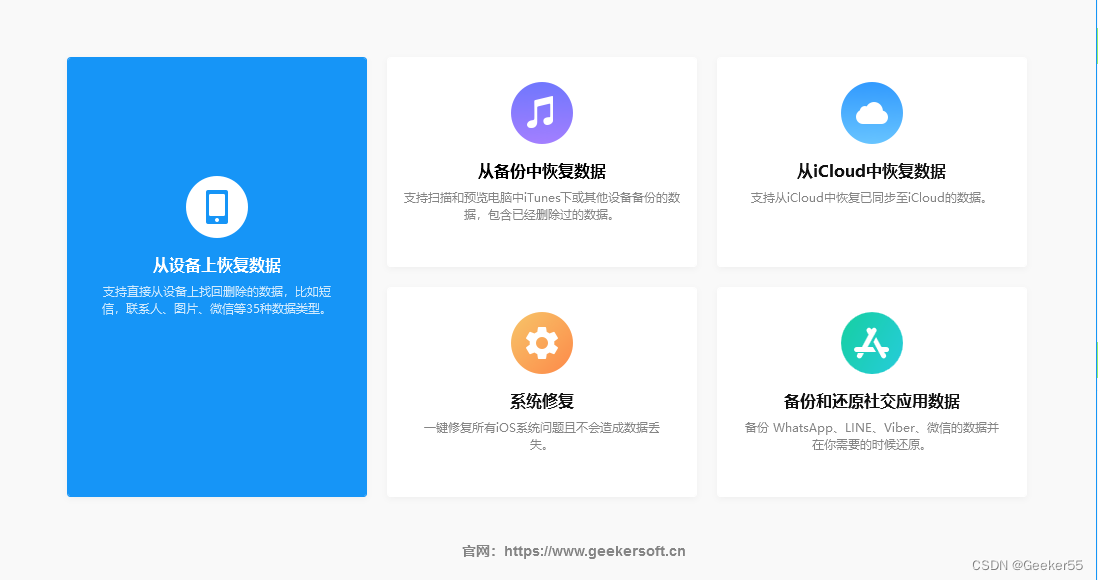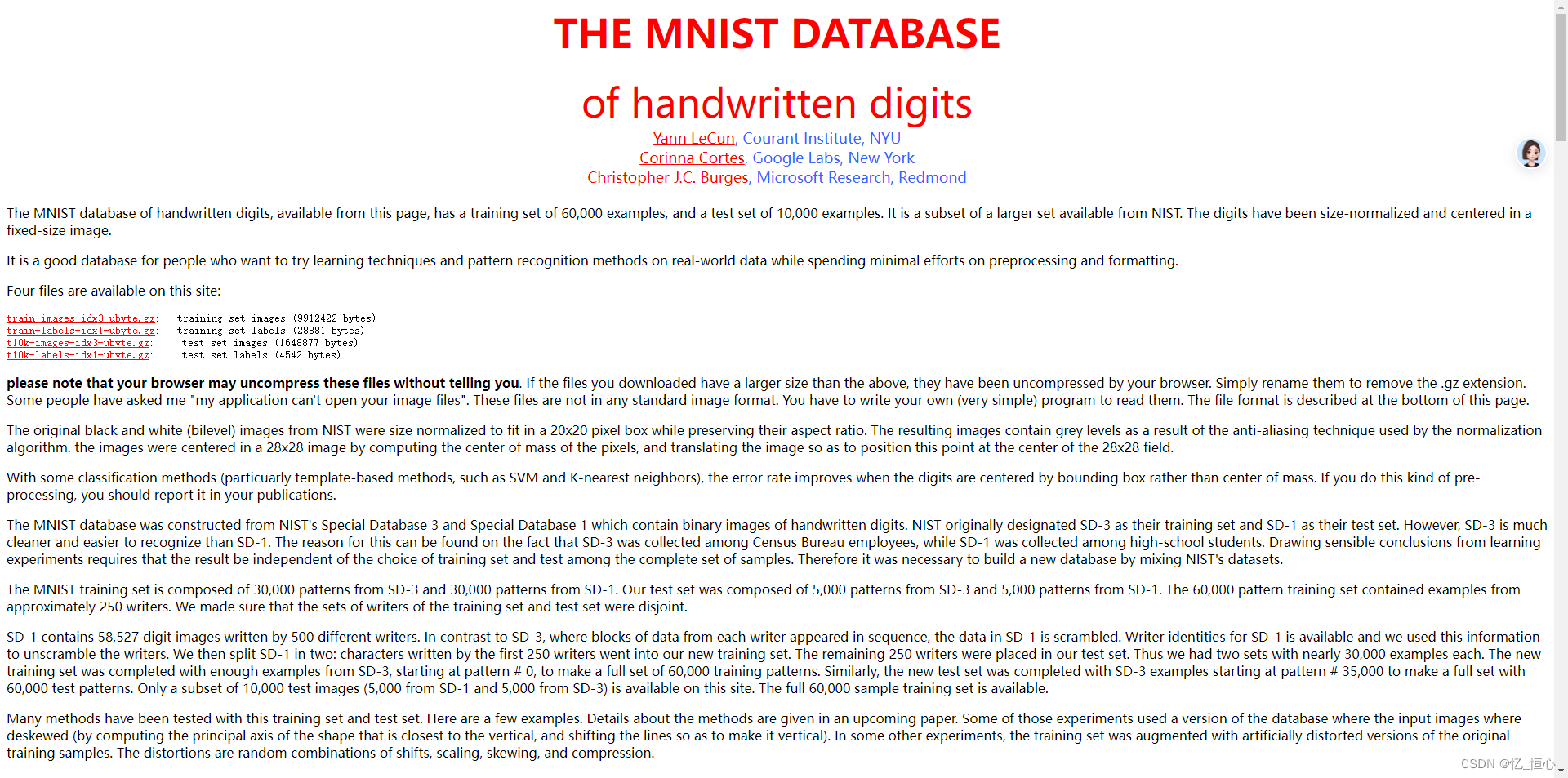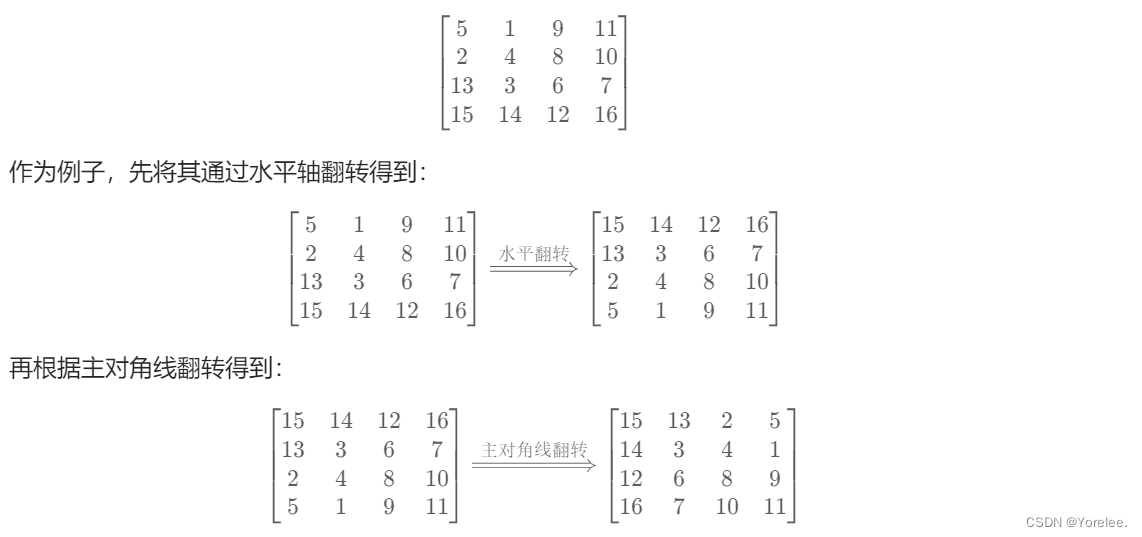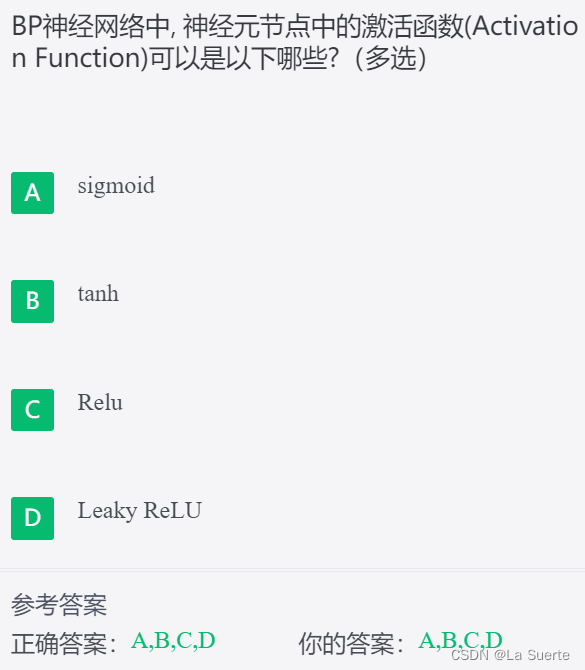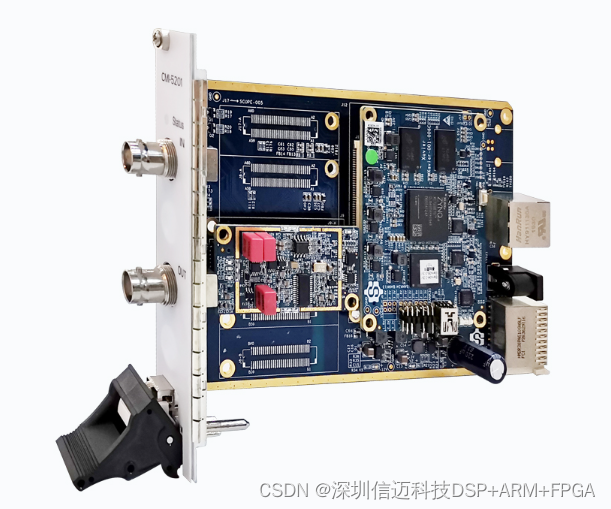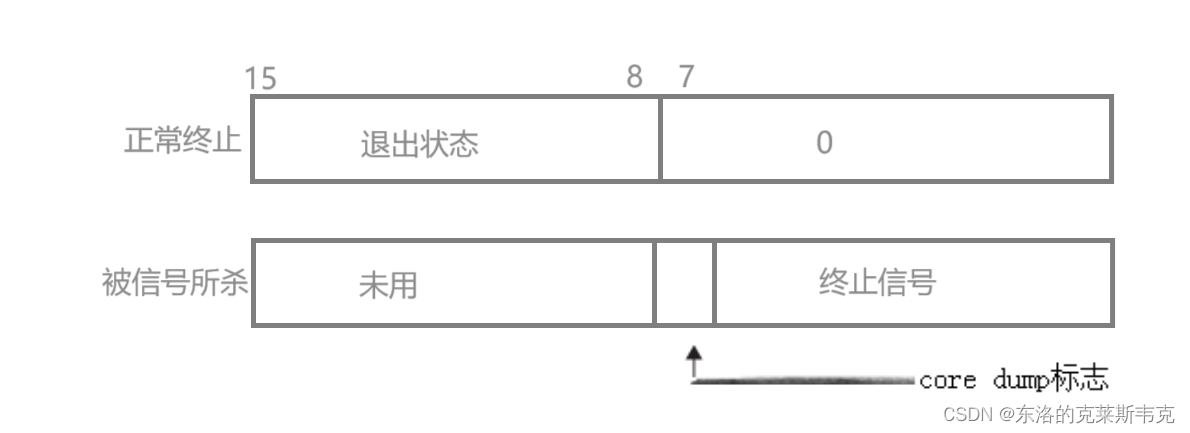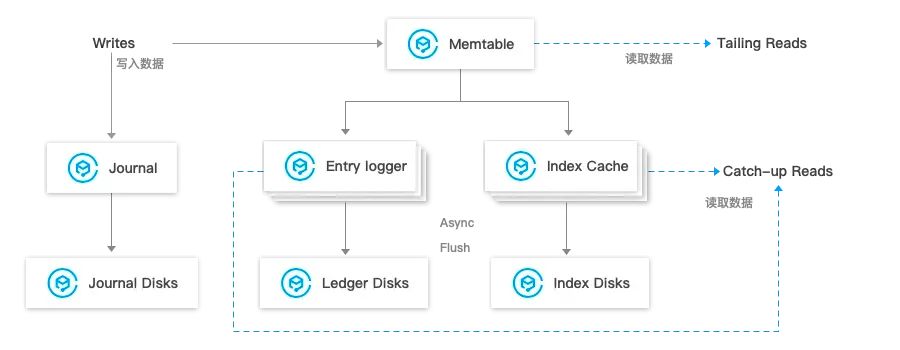
✨✨谢谢大家捧场,祝屏幕前的小伙伴们每天都有好运相伴左右,一定要天天开心哦!✨✨
🎈🎈作者主页: 喔的嘛呀🎈🎈
目录
引言
一. 系统架构设计
1. 系统架构图
二、 系统流程
三、流程实现(简单代码示范)
1、用户访问秒杀页面,点击秒杀按钮发起秒杀请求
前端部分(HTML + JavaScript):
后端部分(Java + Spring Boot):
2、前端负载均衡器将请求分发到多个前端应用服务器上。
Nginx配置示例:
Apache配置示例:
3、前端应用服务器验证用户身份,检查秒杀活动是否开始,是否已经结束。
前端应用服务器(使用Java + Spring Boot):
4、前端应用服务器请求缓存服务器获取商品信息和库存数量
前端应用服务器(Java + Spring Boot):
5、缓存负载均衡器将请求分发到多个缓存应用服务器上。
Redis Cluster配置示例:
Memcached Cluster配置示例:
缓存应用服务器(Java + Spring Boot):
6、缓存应用服务器返回商品信息和库存数量给前端应用服务器
缓存应用服务器(Java + Spring Boot):
7、前端应用服务器根据库存数量判断是否可以参与秒杀,如果可以则生成订单。
前端应用服务器(Java + Spring Boot):
8、前端应用服务器将订单信息发送到后端负载均衡器
前端应用服务器(Java + Spring Boot):
8、后端负载均衡器将请求分发到多个后端应用服务器上
后端负载均衡器(简化示例):
9、后端应用服务器消费订单信息,根据订单信息生成订单,并更新库存数量。
后端应用服务器(Java + Spring Boot):
10、后端应用服务器将订单信息写入数据库集群
后端应用服务器(Java + Spring Boot):
11、 分布式锁用于保护对库存数量的操作,确保数据的一致性。
后端应用服务器(Java + Spring Boot):
总结
引言
设计高并发秒杀系统是一个挑战性的任务,需要考虑到系统的性能、稳定性和数据一致性。本文将介绍如何设计一个高并发的秒杀系统,使用消息队列和分布式锁来确保系统的稳定性和数据一致性。
一. 系统架构设计
我们的高并发秒杀系统将采用以下架构:
- 前端页面:提供秒杀活动的入口,展示商品信息和剩余库存数量。
- 后端服务:处理用户请求,验证用户身份,检查库存,并生成订单。
- 数据库:存储商品信息和订单信息。
- 缓存:缓存商品信息和库存数量,减少对数据库的访问压力。
- 消息队列:用于异步处理订单生成和库存扣减操作,确保系统的高可用性和稳定性。
- 分布式锁:用于保护对库存数量的操作,确保数据一致性。
1. 系统架构图
+-------------------------------------+
| 前端负载均衡器 |
+-----------+--------------+--------------+
| |
+-----------v--------------+--------------+
| 前端应用服务器 | CDN |
+-----------+--------------+--------------+
| |
+----------------------+---------v----------+--------------+-------v--------+-------------+
| 缓存层 | | 后端应用服务器 | 数据库集群 |
+-----------+--------------+ +-----------+--------------+--------------+
| | |
+-----------v--------------+ +-----------v--------------+--------------+
| 缓存服务器 | | 消息队列 | 主数据库 |
+-----------+--------------+ +-----------+--------------+--------------+
| | |
+-----------v--------------+ +-----------v--------------+
| 缓存存储(Redis) | | 业务数据存储(MySQL) |
+---------------------------+ +---------------------------+
在这个架构中:
- 前端负载均衡器:负责将用户请求分发到多个前端应用服务器和CDN上,实现请求的负载均衡,如Nginx。
- 前端应用服务器:处理用户请求,包括验证用户身份、检查秒杀活动是否开始、是否已经结束等,如Tomcat。
- CDN:用于加速网页内容传输,提高访问速度和用户体验。
- 缓存层:使用缓存层存储热点数据,减轻数据库压力,如Redis。
- 缓存服务器:用于存储缓存数据,如Redis服务器。
- 消息队列:用于处理订单生成和库存扣减等业务逻辑,提高系统的并发处理能力,如RabbitMQ。
- 业务数据存储:存储业务数据,如MySQL数据库集群。
通过以上架构设计,可以实现一个高并发的秒杀系统,保证系统的性能、稳定性和数据一致性,为用户提供良好的秒杀体验。
二、 系统流程
- 用户访问秒杀页面,点击秒杀按钮发起秒杀请求。
- 前端负载均衡器将请求分发到多个前端应用服务器上。
- 前端应用服务器验证用户身份,检查秒杀活动是否开始,是否已经结束。
- 前端应用服务器请求缓存服务器获取商品信息和库存数量。
- 缓存负载均衡器将请求分发到多个缓存应用服务器上。
- 缓存应用服务器返回商品信息和库存数量给前端应用服务器。
- 前端应用服务器根据库存数量判断是否可以参与秒杀,如果可以则生成订单。
- 前端应用服务器将订单信息发送到后端负载均衡器。
- 后端负载均衡器将请求分发到多个后端应用服务器上。
- 后端应用服务器消费订单信息,根据订单信息生成订单,并更新库存数量。
- 后端应用服务器将订单信息写入数据库集群。
- 分布式锁用于保护对库存数量的操作,确保数据的一致性。
三、流程实现(简单代码示范)
1、用户访问秒杀页面,点击秒杀按钮发起秒杀请求
流程如下:
前端部分(HTML + JavaScript):
<!DOCTYPE html>
<html>
<head>
<title>秒杀页面</title>
</head>
<body>
<h1>欢迎参加秒杀活动!</h1>
<button id="seckillButton">秒杀按钮</button>
<div id="result"></div>
<script>
document.getElementById("seckillButton").addEventListener("click", function() {
// 模拟用户ID和商品ID
var userId = 123;
var productId = 456;
fetch("/seckill", {
method: "POST",
headers: {
"Content-Type": "application/json"
},
body: JSON.stringify({ userId: userId, productId: productId })
})
.then(response => response.json())
.then(data => {
document.getElementById("result").innerText = data.message;
});
});
</script>
</body>
</html>
后端部分(Java + Spring Boot):
import org.springframework.boot.SpringApplication;
import org.springframework.boot.autoconfigure.SpringBootApplication;
import org.springframework.web.bind.annotation.PostMapping;
import org.springframework.web.bind.annotation.RequestBody;
import org.springframework.web.bind.annotation.RestController;
@SpringBootApplication
public class SeckillApplication {
private boolean seckillStarted = true; // 模拟秒杀活动是否开始
private int stock = 10; // 模拟商品库存
public static void main(String[] args) {
SpringApplication.run(SeckillApplication.class, args);
}
@RestController
public class SeckillController {
@PostMapping("/seckill")
public String seckill(@RequestBody SeckillRequest request) {
if (!seckillStarted) {
return "秒杀活动未开始";
}
if (stock <= 0) {
return "商品已售罄";
}
// 模拟生成订单
stock--;
return "秒杀成功";
}
}
public static class SeckillRequest {
private Long userId;
private Long productId;
// 省略getter和setter方法
}
}
2、前端负载均衡器将请求分发到多个前端应用服务器上。
前端负载均衡器将请求分发到多个前端应用服务器上,可以通过配置负载均衡器(如Nginx、Apache等)来实现。以下是一个简单的示例:
假设有两台前端应用服务器,分别运行在不同的端口上(假设为8001和8002)。
Nginx配置示例:
upstream frontends {
server 127.0.0.1:8001;
server 127.0.0.1:8002;
}
server {
listen 80;
server_name example.com;
location / {
proxy_pass http://frontends;
}
}
在这个示例中,Nginx配置了一个名为frontends的upstream,其中包含两台前端应用服务器的地址和端口。当收到用户请求时,Nginx会根据一定的负载均衡算法(如轮询、权重等)将请求转发到这些服务器上。
Apache配置示例:
<Proxy balancer://frontends>
BalancerMember http://127.0.0.1:8001
BalancerMember http://127.0.0.1:8002
</Proxy>
<VirtualHost *:80>
ServerName example.com
ProxyPass / balancer://frontends/
ProxyPassReverse / balancer://frontends/
</VirtualHost>
在这个示例中,Apache配置了一个名为frontends的负载均衡器,其中包含两台前端应用服务器的地址和端口。当收到用户请求时,Apache会将请求转发到这些服务器上,实现负载均衡。
3、前端应用服务器验证用户身份,检查秒杀活动是否开始,是否已经结束。
以下是一个简单的示例,展示前端应用服务器验证用户身份,检查秒杀活动是否开始或结束的过程:
前端应用服务器(使用Java + Spring Boot):
import org.springframework.boot.SpringApplication;
import org.springframework.boot.autoconfigure.SpringBootApplication;
import org.springframework.web.bind.annotation.PostMapping;
import org.springframework.web.bind.annotation.RequestBody;
import org.springframework.web.bind.annotation.RestController;
@SpringBootApplication
public class FrontendApplication {
private boolean seckillStarted = true; // 模拟秒杀活动是否开始
private boolean seckillEnded = false; // 模拟秒杀活动是否结束
public static void main(String[] args) {
SpringApplication.run(FrontendApplication.class, args);
}
@RestController
public class SeckillController {
@PostMapping("/seckill")
public String seckill(@RequestBody SeckillRequest request) {
// 验证用户身份,假设用户身份验证通过
if (!isUserAuthenticated(request.getUserId())) {
return "用户身份验证失败";
}
// 检查秒杀活动是否开始或结束
if (!isSeckillStarted()) {
return "秒杀活动未开始";
}
if (isSeckillEnded()) {
return "秒杀活动已结束";
}
// 处理秒杀请求
return "秒杀请求处理中";
}
private boolean isUserAuthenticated(Long userId) {
// 省略实际的用户身份验证逻辑
return true;
}
private boolean isSeckillStarted() {
// 省略实际的秒杀活动开始检查逻辑
return seckillStarted;
}
private boolean isSeckillEnded() {
// 省略实际的秒杀活动结束检查逻辑
return seckillEnded;
}
}
public static class SeckillRequest {
private Long userId;
private Long productId;
// 省略getter和setter方法
}
}
在这个示例中,前端应用服务器通过Spring Boot框架实现了一个简单的/seckill接口,接收用户的秒杀请求。在处理请求之前,先验证用户身份,然后检查秒杀活动是否开始或结束。如果用户身份验证失败,则返回"用户身份验证失败";如果秒杀活动未开始,则返回"秒杀活动未开始";如果秒杀活动已结束,则返回"秒杀活动已结束";否则处理秒杀请求。
4、前端应用服务器请求缓存服务器获取商品信息和库存数量
前端应用服务器(Java + Spring Boot):
首先,需要在前端应用服务器中配置缓存服务器的地址和端口信息,以便发送请求。
import org.springframework.boot.SpringApplication;
import org.springframework.boot.autoconfigure.SpringBootApplication;
import org.springframework.web.bind.annotation.PostMapping;
import org.springframework.web.bind.annotation.RequestBody;
import org.springframework.web.bind.annotation.RestController;
import org.springframework.web.client.RestTemplate;
@SpringBootApplication
public class FrontendApplication {
private static final String CACHE_SERVER_URL = "http://cache-server:8080"; // 缓存服务器地址
public static void main(String[] args) {
SpringApplication.run(FrontendApplication.class, args);
}
@RestController
public class SeckillController {
private final RestTemplate restTemplate = new RestTemplate();
@PostMapping("/seckill")
public String seckill(@RequestBody SeckillRequest request) {
// 请求缓存服务器获取商品信息和库存数量
String url = CACHE_SERVER_URL + "/product/" + request.getProductId();
ProductInfo productInfo = restTemplate.getForObject(url, ProductInfo.class);
if (productInfo == null) {
return "获取商品信息失败";
}
// 处理秒杀请求
return "请求处理中";
}
}
public static class SeckillRequest {
private Long userId;
private Long productId;
// 省略getter和setter方法
}
public static class ProductInfo {
private Long productId;
private String productName;
private int stock;
// 省略getter和setter方法
}
}
在这个示例中,前端应用服务器使用RestTemplate发送GET请求到缓存服务器的/product/{productId}路由,获取商品信息和库存数量。如果成功获取到商品信息,则继续处理秒杀请求;否则返回"获取商品信息失败"。
5、缓存负载均衡器将请求分发到多个缓存应用服务器上。
缓存负载均衡器将请求分发到多个缓存应用服务器上,可以通过配置缓存负载均衡器(如Redis Cluster、Memcached Cluster等)来实现。以下是一个简单的示例:
假设有两台缓存应用服务器,分别运行在不同的地址和端口上(假设为cache-server1:6379和cache-server2:6379)。
Redis Cluster配置示例:
# 启动redis-server节点1
redis-server --port 6379
# 启动redis-server节点2
redis-server --port 6380
# 创建Redis Cluster
redis-cli --cluster create cache-server1:6379 cache-server2:6379 --cluster-replicas 1
在这个示例中,我们创建了一个包含两个主节点和一个从节点的Redis Cluster。缓存负载均衡器可以将请求分发到这个Redis Cluster上,实现缓存的负载均衡。
Memcached Cluster配置示例:
# 安装memcached
sudo apt-get update
sudo apt-get install memcached
# 启动memcached节点1
memcached -p 11211 -d
# 启动memcached节点2
memcached -p 11212 -d
# 配置memcached集群
echo "add 127.0.0.1 11212" | nc 127.0.0.1 11211
在这个示例中,我们创建了一个包含两个节点的Memcached Cluster。缓存负载均衡器可以将请求分发到这个Memcached Cluster上,实现缓存的负载均衡。
在实际生产环境中,需要根据具体需求和负载情况来配置缓存负载均衡器,并保证缓存服务器之间的数据同步和一致性。
6、缓存应用服务器返回商品信息和库存数量给前端应用服务器
缓存应用服务器(Java + Spring Boot):
import org.springframework.boot.SpringApplication;
import org.springframework.boot.autoconfigure.SpringBootApplication;
import org.springframework.web.bind.annotation.GetMapping;
import org.springframework.web.bind.annotation.PathVariable;
import org.springframework.web.bind.annotation.RestController;
import java.util.HashMap;
import java.util.Map;
@SpringBootApplication
public class CacheServerApplication {
private static final Map<Long, ProductInfo> productCache = new HashMap<>();
public static void main(String[] args) {
SpringApplication.run(CacheServerApplication.class, args);
}
@RestController
public class CacheController {
@GetMapping("/product/{productId}")
public ProductInfo getProductInfo(@PathVariable Long productId) {
// 从缓存中获取商品信息
return productCache.getOrDefault(productId, new ProductInfo(productId, "Unknown", 0));
}
}
public static class ProductInfo {
private Long productId;
private String productName;
private int stock;
public ProductInfo(Long productId, String productName, int stock) {
this.productId = productId;
this.productName = productName;
this.stock = stock;
}
// 省略getter和setter方法
}
}
在这个示例中,缓存应用服务器通过Spring Boot框架实现了一个简单的/cache接口,接收前端应用服务器的商品信息请求。根据商品ID从缓存中获取商品信息,如果缓存中不存在该商品信息,则返回一个未知商品信息。
6、缓存应用服务器返回商品信息和库存数量给前端应用服务器
缓存应用服务器(Java + Spring Boot):
import org.springframework.boot.SpringApplication;
import org.springframework.boot.autoconfigure.SpringBootApplication;
import org.springframework.web.bind.annotation.GetMapping;
import org.springframework.web.bind.annotation.PathVariable;
import org.springframework.web.bind.annotation.RestController;
import java.util.HashMap;
import java.util.Map;
@SpringBootApplication
public class CacheServerApplication {
private static final Map<Long, ProductInfo> productCache = new HashMap<>();
public static void main(String[] args) {
SpringApplication.run(CacheServerApplication.class, args);
}
@RestController
public class CacheController {
@GetMapping("/product/{productId}")
public ProductInfo getProductInfo(@PathVariable Long productId) {
// 从缓存中获取商品信息
return productCache.getOrDefault(productId, new ProductInfo(productId, "Unknown", 0));
}
}
public static class ProductInfo {
private Long productId;
private String productName;
private int stock;
public ProductInfo(Long productId, String productName, int stock) {
this.productId = productId;
this.productName = productName;
this.stock = stock;
}
// 省略getter和setter方法
}
}
在这个示例中,缓存应用服务器通过Spring Boot框架实现了一个简单的/cache接口,接收前端应用服务器的商品信息请求。根据商品ID从缓存中获取商品信息,如果缓存中不存在该商品信息,则返回一个未知商品信息。
7、前端应用服务器根据库存数量判断是否可以参与秒杀,如果可以则生成订单。
前端应用服务器(Java + Spring Boot):
import org.springframework.boot.SpringApplication;
import org.springframework.boot.autoconfigure.SpringBootApplication;
import org.springframework.web.bind.annotation.PostMapping;
import org.springframework.web.bind.annotation.RequestBody;
import org.springframework.web.bind.annotation.RestController;
import java.util.HashMap;
import java.util.Map;
@SpringBootApplication
public class FrontendApplication {
private static final Map<Long, Integer> stockMap = new HashMap<>(); // 模拟商品库存
private static final Map<Long, Boolean> seckillMap = new HashMap<>(); // 模拟秒杀活动是否开始
private static final Map<Long, Boolean> seckillEndMap = new HashMap<>(); // 模拟秒杀活动是否结束
private static final Map<Long, Long> userOrders = new HashMap<>(); // 模拟用户订单
public static void main(String[] args) {
// 初始化商品库存
stockMap.put(1L, 10);
// 初始化秒杀活动状态
seckillMap.put(1L, true);
// 初始化秒杀活动结束状态
seckillEndMap.put(1L, false);
SpringApplication.run(FrontendApplication.class, args);
}
@RestController
public class SeckillController {
@PostMapping("/seckill")
public String seckill(@RequestBody SeckillRequest request) {
Long productId = request.getProductId();
Long userId = request.getUserId();
// 判断秒杀活动是否开始或结束
if (!seckillMap.getOrDefault(productId, false)) {
return "秒杀活动未开始";
}
if (seckillEndMap.getOrDefault(productId, true)) {
return "秒杀活动已结束";
}
// 判断库存是否足够
Integer stock = stockMap.getOrDefault(productId, 0);
if (stock <= 0) {
return "商品已售罄";
}
// 生成订单
userOrders.put(userId, productId);
// 更新库存
stockMap.put(productId, stock - 1);
return "秒杀成功";
}
}
public static class SeckillRequest {
private Long userId;
private Long productId;
// 省略getter和setter方法
}
}
在这个示例中,前端应用服务器根据商品ID获取库存数量,判断秒杀活动是否开始或结束,以及库存是否足够。如果满足条件,则生成订单并更新库存,返回秒杀成功;否则返回相应的错误信息。
8、前端应用服务器将订单信息发送到后端负载均衡器
前端应用服务器(Java + Spring Boot):
import org.springframework.boot.SpringApplication;
import org.springframework.boot.autoconfigure.SpringBootApplication;
import org.springframework.web.bind.annotation.PostMapping;
import org.springframework.web.bind.annotation.RequestBody;
import org.springframework.web.bind.annotation.RestController;
import org.springframework.web.client.RestTemplate;
@SpringBootApplication
public class FrontendApplication {
private static final String LOAD_BALANCER_URL = "http://backend-load-balancer";
public static void main(String[] args) {
SpringApplication.run(FrontendApplication.class, args);
}
@RestController
public class OrderController {
private final RestTemplate restTemplate = new RestTemplate();
@PostMapping("/order")
public String placeOrder(@RequestBody OrderRequest request) {
// 向后端负载均衡器发送订单信息
String url = LOAD_BALANCER_URL + "/order";
return restTemplate.postForObject(url, request, String.class);
}
}
public static class OrderRequest {
private Long orderId;
private Long productId;
private Long userId;
// 省略getter和setter方法
}
}
在这个示例中,前端应用服务器通过Spring Boot框架实现了一个简单的/order接口,接收订单信息,并使用RestTemplate将订单信息发送到后端负载均衡器的/order接口。
8、后端负载均衡器将请求分发到多个后端应用服务器上
后端负载均衡器(简化示例):
在实际应用中,后端负载均衡器可以使用诸如Nginx、HAProxy、AWS ELB等工具来实现。这里简化为直接在Java中模拟负载均衡器的行为。
import java.util.ArrayList;
import java.util.List;
import java.util.Random;
public class LoadBalancer {
private List<String> backendServers;
public LoadBalancer() {
backendServers = new ArrayList<>();
backendServers.add("http://backend-server1");
backendServers.add("http://backend-server2");
// 添加更多后端服务器...
}
public String selectBackendServer() {
// 模拟负载均衡算法,这里简单使用随机选择
Random random = new Random();
int index = random.nextInt(backendServers.size());
return backendServers.get(index);
}
public static void main(String[] args) {
LoadBalancer loadBalancer = new LoadBalancer();
// 模拟请求分发给后端服务器
for (int i = 0; i < 10; i++) {
String backendServer = loadBalancer.selectBackendServer();
System.out.println("Request sent to: " + backendServer);
}
}
}
在这个示例中,LoadBalancer类模拟了一个简单的负载均衡器,它维护了一个后端服务器列表,并实现了一个简单的随机选择算法来选择后端服务器。在实际应用中,需要根据实际情况选择合适的负载均衡算法。
9、后端应用服务器消费订单信息,根据订单信息生成订单,并更新库存数量。
后端应用服务器(Java + Spring Boot):
import org.springframework.boot.SpringApplication;
import org.springframework.boot.autoconfigure.SpringBootApplication;
import org.springframework.web.bind.annotation.PostMapping;
import org.springframework.web.bind.annotation.RequestBody;
import org.springframework.web.bind.annotation.RestController;
import java.util.HashMap;
import java.util.Map;
@SpringBootApplication
public class BackendApplication {
private static final Map<Long, Integer> stockMap = new HashMap<>();
public static void main(String[] args) {
// 初始化库存数量
stockMap.put(1L, 10);
SpringApplication.run(BackendApplication.class, args);
}
@RestController
public class OrderController {
@PostMapping("/order")
public String createOrder(@RequestBody OrderRequest request) {
Long orderId = request.getOrderId();
Long productId = request.getProductId();
Long userId = request.getUserId();
// 判断库存是否足够
Integer stock = stockMap.getOrDefault(productId, 0);
if (stock <= 0) {
return "商品已售罄";
}
// 生成订单
String orderInfo = "订单信息:订单号-" + orderId + ",商品ID-" + productId + ",用户ID-" + userId;
// 更新库存数量
stockMap.put(productId, stock - 1);
return "生成订单成功:" + orderInfo;
}
}
public static class OrderRequest {
private Long orderId;
private Long productId;
private Long userId;
// 省略getter和setter方法
}
}
在这个示例中,后端应用服务器通过Spring Boot框架实现了一个简单的/order接口,接收订单信息,并根据订单信息生成订单,并更新库存数量。如果库存不足,则返回"商品已售罄"。
10、后端应用服务器将订单信息写入数据库集群
将订单信息写入数据库集群是一个关键的步骤,需要考虑到数据的一致性和高可用性。下面是一个详细全面的示例,演示如何将订单信息写入数据库集群:
后端应用服务器(Java + Spring Boot):
import org.springframework.boot.SpringApplication;
import org.springframework.boot.autoconfigure.SpringBootApplication;
import org.springframework.web.bind.annotation.PostMapping;
import org.springframework.web.bind.annotation.RequestBody;
import org.springframework.web.bind.annotation.RestController;
import java.sql.Connection;
import java.sql.DriverManager;
import java.sql.PreparedStatement;
import java.sql.SQLException;
@SpringBootApplication
public class BackendApplication {
public static void main(String[] args) {
SpringApplication.run(BackendApplication.class, args);
}
@RestController
public class OrderController {
@PostMapping("/order")
public String createOrder(@RequestBody OrderRequest request) {
Long orderId = request.getOrderId();
Long productId = request.getProductId();
Long userId = request.getUserId();
// 生成订单
String orderInfo = "订单信息:订单号-" + orderId + ",商品ID-" + productId + ",用户ID-" + userId;
// 将订单信息写入数据库集群
boolean success = writeToDatabase(orderInfo);
if (success) {
return "生成订单成功:" + orderInfo;
} else {
return "生成订单失败:" + orderInfo;
}
}
private boolean writeToDatabase(String orderInfo) {
// 连接数据库集群 这里为了方便演示没有用yaml进行配置
String url = "jdbc:mysql://database-cluster:3306/database";
String user = "user";
String password = "password";
try (Connection connection = DriverManager.getConnection(url, user, password)) {
// 写入订单信息
String sql = "INSERT INTO orders (order_info) VALUES (?)";
try (PreparedStatement statement = connection.prepareStatement(sql)) {
statement.setString(1, orderInfo);
int rowsAffected = statement.executeUpdate();
return rowsAffected > 0;
}
} catch (SQLException e) {
e.printStackTrace();
return false;
}
}
}
public static class OrderRequest {
private Long orderId;
private Long productId;
private Long userId;
// 省略getter和setter方法
}
}
11、 分布式锁用于保护对库存数量的操作,确保数据的一致性。
分布式锁用于保护对库存数量的操作,确保数据的一致性。下面是一个详细全面的示例,演示如何使用Redis实现分布式锁来保护对库存数量的操作:
后端应用服务器(Java + Spring Boot):
import org.springframework.boot.SpringApplication;
import org.springframework.boot.autoconfigure.SpringBootApplication;
import org.springframework.web.bind.annotation.PostMapping;
import org.springframework.web.bind.annotation.RequestBody;
import org.springframework.web.bind.annotation.RestController;
import redis.clients.jedis.Jedis;
@SpringBootApplication
public class BackendApplication {
private static final String REDIS_HOST = "localhost";
private static final int REDIS_PORT = 6379;
private static final String LOCK_KEY = "inventory_lock";
private static final String INVENTORY_KEY = "inventory";
public static void main(String[] args) {
SpringApplication.run(BackendApplication.class, args);
}
@RestController
public class OrderController {
@PostMapping("/order")
public String createOrder(@RequestBody OrderRequest request) {
Long orderId = request.getOrderId();
Long productId = request.getProductId();
Long userId = request.getUserId();
// 获取分布式锁
try (Jedis jedis = new Jedis(REDIS_HOST, REDIS_PORT)) {
boolean locked = false;
while (!locked) {
locked = jedis.setnx(LOCK_KEY, "locked") == 1;
if (!locked) {
try {
Thread.sleep(100);
} catch (InterruptedException e) {
Thread.currentThread().interrupt();
}
}
}
// 获取锁成功,处理订单
int stock = Integer.parseInt(jedis.get(INVENTORY_KEY));
if (stock > 0) {
// 生成订单
String orderInfo = "订单信息:订单号-" + orderId + ",商品ID-" + productId + ",用户ID-" + userId;
System.out.println("生成订单成功:" + orderInfo);
// 更新库存数量
jedis.set(INVENTORY_KEY, String.valueOf(stock - 1));
} else {
System.out.println("商品已售罄");
}
// 释放锁
jedis.del(LOCK_KEY);
}
return "订单处理完成";
}
}
public static class OrderRequest {
private Long orderId;
private Long productId;
private Long userId;
// 省略getter和setter方法
}
}
在这个示例中,后端应用服务器通过Spring Boot框架实现了一个简单的/order接口,接收订单信息,并使用Redis实现分布式锁来保护对库存数量的操作。当多个请求同时到达时,只有一个请求能够获得锁并处理订单,其他请求需要等待锁释放后才能继续处理。这样可以保证对库存数量的操作是原子性的,从而确保数据的一致性。
总结
设计高并发的秒杀系统需要考虑到多个方面,包括系统架构、技术选型、流程设计和代码实现等。通过合理的架构设计和技术选型,可以实现一个稳定高效的秒杀系统,为用户提供良好的购物体验。



